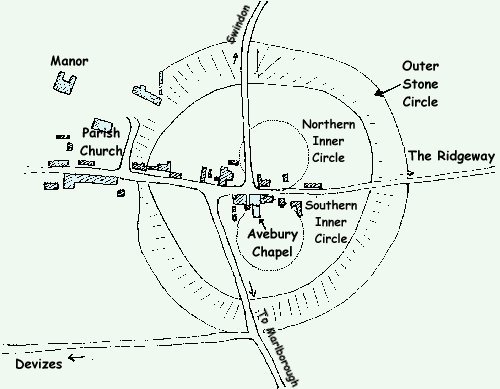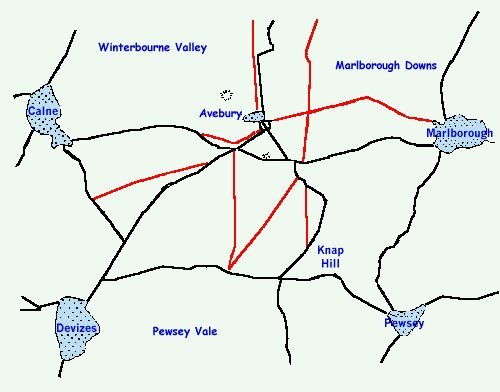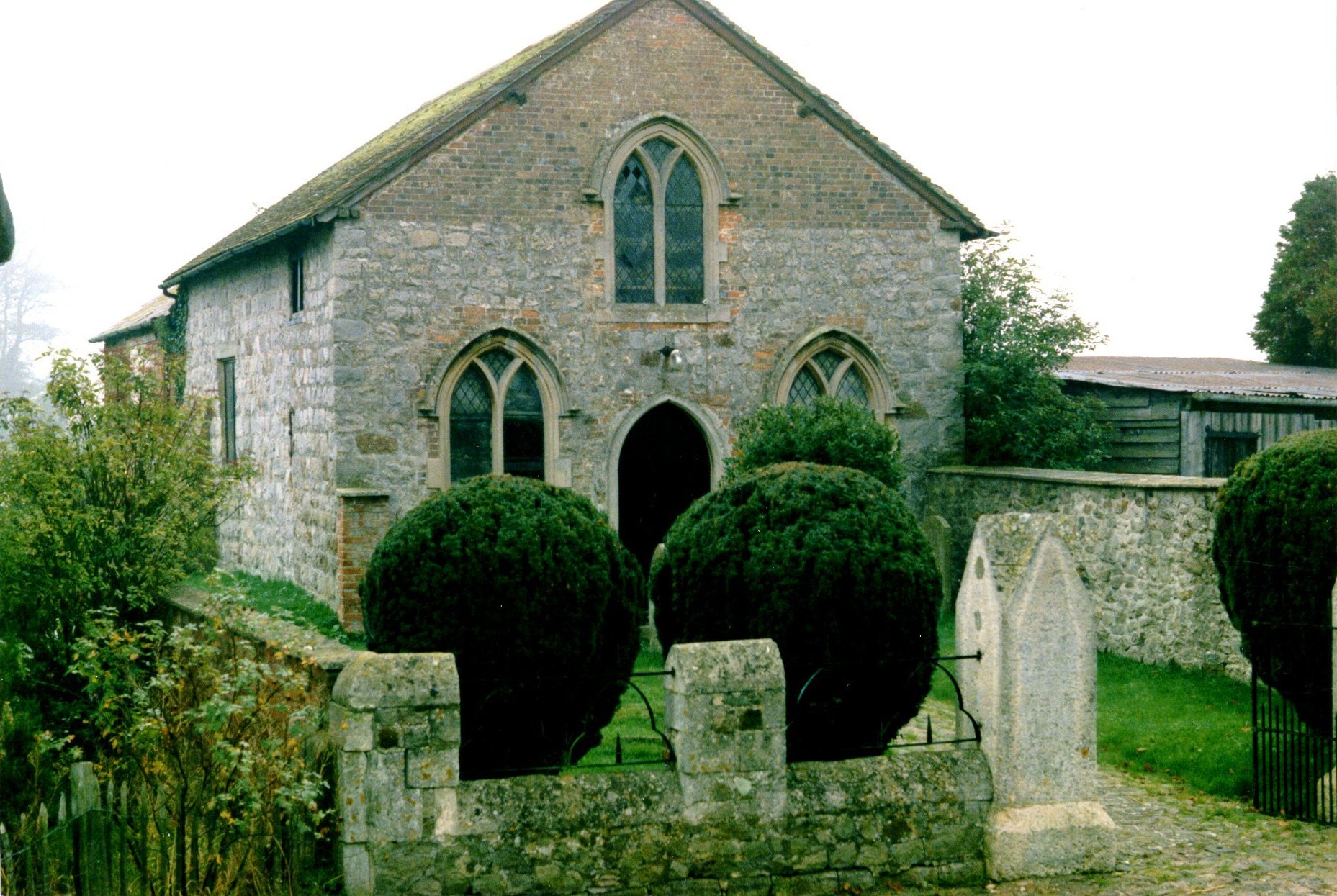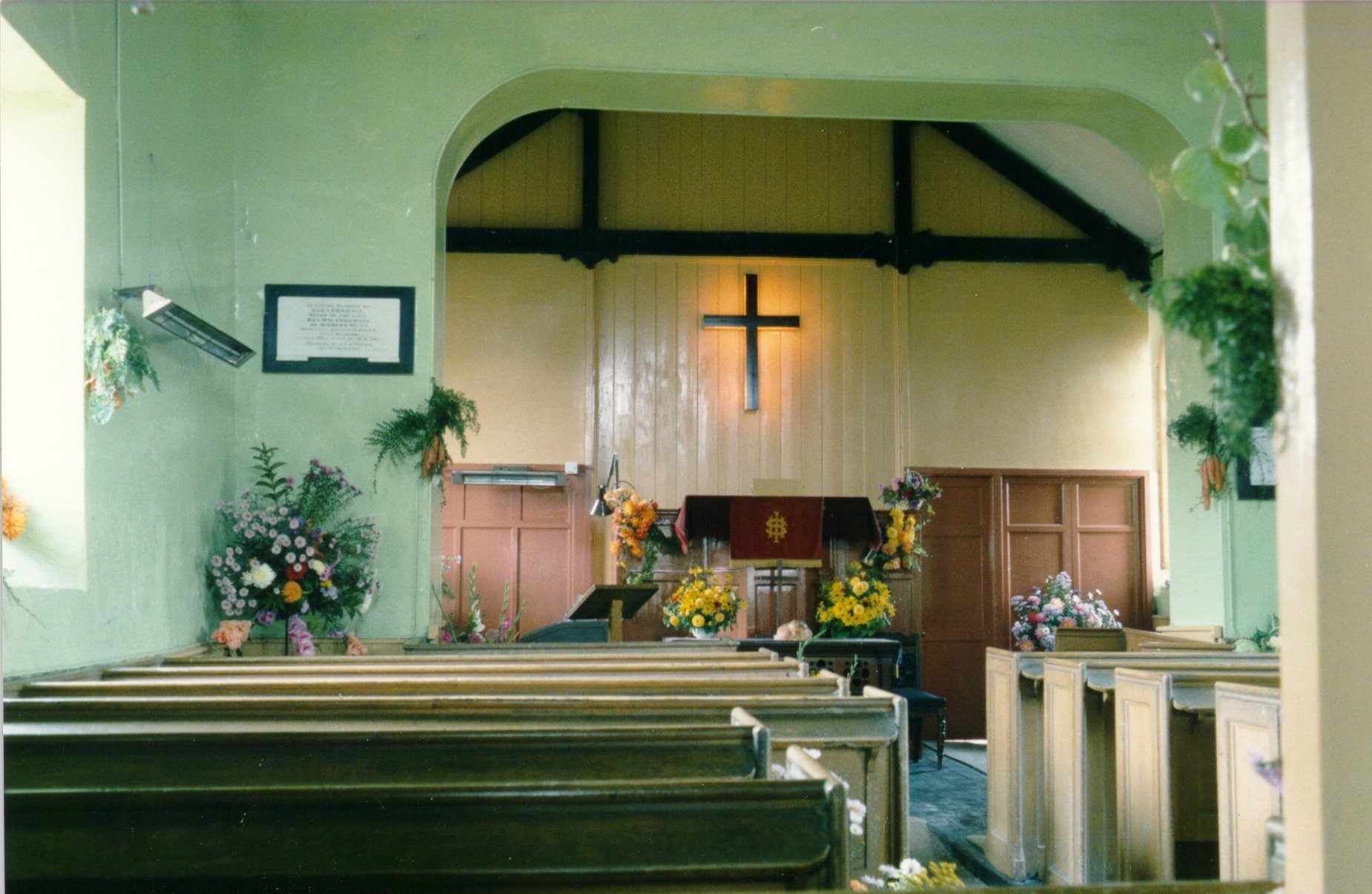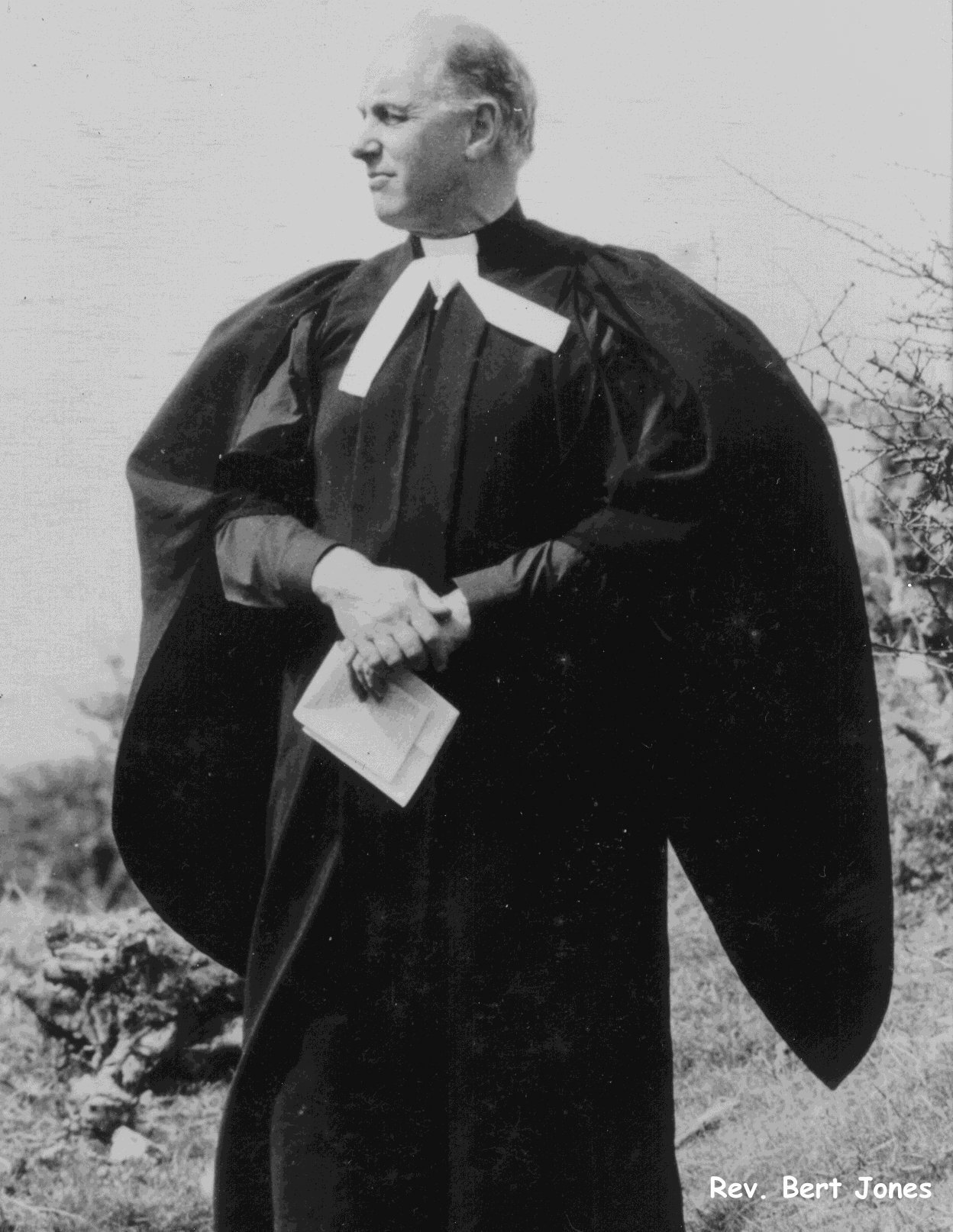|
||||||||||||||||||||||||||||||||||||||
History of Avebury Congregational Chapel, Avebury, WiltshireThis is a copy of the history book/leaflet written by Hilary Dunscombe about Avebury Congregational Chapel, which is available at the chapel. Hilary (and Rev. Jones) have kindly allowed us to copy the book - please note the copyright is held by Hilary Dunscombe and Rev. H.W. Jones - extracts may be used provided one of them gives prior permission. A FIVE MILE CHAPEL
First published in 1990 by Hilary Dunscombe Second publication 1998 c/o Avebury Chapel, Green Street, Avebury. Copyright: Hilary Dunscombe or Rev. H. W. Jones. Extracts may be used provided one of the above gives prior permission. While every effort has been made to ensure that the information is correct, the reader may have proof of error, which we would be glad to receive. E. and O.E. Since becoming Pastor of this tiny Chapel in 1972, the Rev. Bert Jones has collected together much information about its life and history. I have endeavoured to form it into a readable and attractive booklet. The gate to the Chapel is always open and you are invited to wander round or sit in the tiny graveyard. The Chapel is just five minutes walk away from the Church and Great Barn.
Avebury Chapel is one of the few places for religious worship actually built within a prehistoric stone circle. The founders cannot have inherited any of the superstitious fears of Medieval times for they used pieces of the stones to build the walls of their own Chapel. At this time many villagers were using the stone for domestic building. Large sarsens were broken up with fire and hammer to produce pieces of a usable size. In the early days the Chapel looked directly on the tallest stone of all, the Obelisk 21 feet high. Later when the stone was removed the villagers erected a Maypole. Both were probably garlanded and danced round at festival times. Avebury Chapel was formed in 1670 during a time of great religious and civil unrest. It was probably the first of the very few permanent meeting houses established in this area although large outdoor meetings were held in many places. Just a few years earlier under the rule of Oliver Cromwell non-conformism within the parish church had been encouraged. But in 1660 with the restoration of the monarchy in the person of Charles II the non-conformists were to gradually lose their freedom of worship. The first blow came in 1661 with the passing of the ‘Corporation Act’ which compelled all Municipal Officers and M.P.s to take the sacrament according to the rites of the Church of England. Some people in the area found they could not in all conscience do this. This was followed by ‘The Act of Uniformity of 1662’ which forced every vicar to publicly declare his consent to everything contained in ‘The Book of Common Prayer’. Many felt unable to do this and resigned taking free thinking parishioners with them. Next came The Conventicle Act of 1664 which prohibited gatherings of more than five persons to worship together otherwise than according to the Book of Common Prayer. Punishments for disobeying this Act were:
Despite these threats illegal meetings must have been held in secret as in 1665 ‘The Five Mile Act’ was passed forbidding the ejected ministers from preaching within five miles of the church they had officiated in. So in 1670 ministers from Marlborough, Devizes and Calne together with their congregations decided to meet at Avebury which was a central point for all three and just outside the prohibited area. Many of these ministers were energetic well educated men who had a strong influence on the County’s religious life. Richard Morrice and Peter Griffin were two founder members. It was also convenient for non-conformists from the Pewsey Vale and villages of Winterbourne valley with footpaths all leading to Avebury. The sincerity of those early pioneers cannot be doubted as all paths in those days were rough and rutted and often deep with mud, and the round trip must have been at least twelve miles for some. One of the first ministers was John Baker of Chisledon who addressed congregations in Berwick Basset and Winterbourne Monkton as well as Avebury. In 1670 there was a congregation of 25 compared with 181 Anglicans. By 1676 a tenth of the population of Marlborough were professing dissenters. Often wives, children and servants would go against the head of the family and cause embarrassment. In 1678 several Marlborough Corporation Members were given an ultimatum to force their households back to church or resign from office. An item entitled ‘Avebury Sabbath Breakers 1682’ said:-
The dissenters grew in strength over the next twenty years and in 1699 ‘The Toleration Act’ was passed and non-conformists were once again allowed freedom of worship. The first home of the congregation was in cottages opposite the present Chapel but with the suggested numbers they must have had outdoor meetings whenever the weather was suitable. The first written records date back to 1707:-
In another legal paper dated 1723 the Chapel is referred to as ‘The Meeting House’ and signed by Samuel Morris, Thomas Griffin, Joseph Hayward, George Arnold, Edward Cue and Thomas Robinson.
Strong family ties are suggested by the recurring surnames in the early days. Many must have moved nearer Avebury as time passed if work and housing was available. There is no comprehensive list of ministers but we know from Marlborough Records that J. Bale was minister in 1715 and an average congregation was about 130. At this time the roads of the village were unpaved tracks except for the cobble and flint paths to the Parish Church along the main street, and a path constructed by Chapel members from the Manse to the Chapel. The Manse was bought for the first minister John Baker. Previously it had been a malt house and bakery with stable and coaching bays. This must have been quite costly and suggests a numerous and enthusiastic congregation. Throughout the 19th century there were strong links with the free church at Calne which helped Avebury when they were in financial difficulties, the main support coming from the well known Harris family. Congregational Church Records suggest that the Chapel was never in any real financial difficulties although never large enough or important enough to host the County Union Meetings which tended to be held in the market towns. The Chapel was enlarged which suggests a growing congregation. The roof was raised to incorporate a balcony for extra seating and a brick triangle at the top of the front elevation shows the extra height gained. A schoolroom of brick with a sarsen rubble facade at the Stone Circle end was added. An effort to match this to the actual Chapel building meant that lead lights were incorporated. The First Penny School in the Parish was begun here. It was run by the ministers who taught Arithmetic, Grammar, Geography, History, Reading and Writing.
The graveyard has probably been in use since the opening of the Chapel but the earliest gravestones are dedicated to A.C 1835 and M.C. 1837 close to the Chapel door. These stones belonged to the family of the Rev. Cornwall. These were replaced later with a large stone containing more information. Ann daughter of Will and Elizabeth Cornwall who died November 17th 1835 aged 3 years 2 months "Short pain short grief dear child was thine Now joys eternal and divine". "Also Martha Cornwall who died August 9th 1837 aged 31 years The mother of the just is blessed." The first minister buried in the Chapel yard and marked with a stone is the Rev. E.W. Slater who died on April 14th 1894. Throughout the Century the congregation appears to have grown, from 42 members in 1829 to 200 in 1889 and during the second half a large and flourishing Sunday School existed. At the end of the Century Tom and Sarah Pinegar who were farming at Beckhampton were Superintendents. The Chapel was lit by oil lamps and candles. A furnace on the East wall heated the Chapel and a high iron grating let warm air through into the school room. Through the second half of the century Sankey hymns were sung enthusiastically. Entries in a local Directory for the last quarter are as follows:
In the early years acetylene gas replaced the oil lamps and candles but this often gave trouble in the frosty weather when water froze in the container. The light however was much better and Miss Nellie Kersley and her father walked over the fields from Beckhampton well before the service to check it. Nellie scrubbed and polished the Chapel for over seventy five years. She also arranged the flowers and prepared communion. Mr H.J. Sawyer, a lay preacher, remembers his first visit to Avebury Congregational Church in 1912. “As we walked over the Downs to Evening Service, my friend said “Hurry up or you won’t get a seat”. Certainly every seat was occupied. The service was conducted by the last resident minister the Rev. Alford who lived in the Manse opposite the entrance to the Church.” Although Charles Alford was minister for about 22 years, more seemed to be remembered about his mother-in-law who lived in the manse. Mrs Le-Patourle was born in Guernsey and keen on her native French cooking. She brought a colony of edible snails with her and descendents of these can still be found in the old manse garden. The small ones have shells of bright yellow and the larger ones are chocolate brown with white circles. She died in Avebury at the age of 90 in 1915 and her tombstone says she lived a beautiful godly life. During the First World War a Lay Preacher and retired bank manager oversaw the Chapel. Later Marlborough Church was asked to take responsibility and the Rev. George Kirby made a weekly journey on his tricycle and occasionally conducted a Sunday Service. The two Hunter daughters who ran the Post Office in the village for many years were staunch members of the Chapel and a large tablet on the wall commemorates Mr. Hunter’s work with the Sunday School. Mr. Hunter was a farmer and owned land along the Swindon Road. Ann Hunter played the organ and taught in the Sunday School. Mr. Hunter gave 30 years service to the Chapel between 1882 and 1912. After the First World War people were more mobile looking for work, family traditions weakened and small Chapels throughout the country began to fade. Avebury was no exception and by 1923 the numbers in attendance did not warrant another minister and the manse was sold as a private house. From then on ministers were resident in Marlborough with lay preachers of various denominations in support, the first was R. Mould. In the 1930s the Rev. Leach rode over on his bicycle and used this for visiting his widespread flock. During this time Scripture Union Meetings were held on Wednesday. They were run by Frank Hatherall. They were interesting and popular and included Bible readings and competitions. The Annual Outing was a charabanc trip to Savernake Forest where half the passengers had to walk up the hill to lighten the load. In 1932 electric light was installed in the Chapel. The Rev. Clifford Bozeat was an excellent preacher and could hold adults and children spellbound. He travelled first by moped then car to Avebury. He came in the early 1940’s and stayed 14 years marrying Miss Gale the daughter of a great Church worker and lay preacher. During the Second World War children were evacuated from the Custom House, East London and the Chapel Schoolroom was used for lessons. At this time too the Royal Engineers were billeted at Beckhampton and a Lieutenant from Beckhampton House (Officers Quarters) held a service every Sunday morning for the soldiers and anyone else who cared to come. Mary Jane King acted as part time caretaker at this time. She lit the fires and swept the schoolroom and tended the fire in the Chapel. About 1949 the Womens Institute was re-formed and met monthly in the Schoolroom. Kettles were boiled on an old stove in the centre of the room and the washing up was done in bowls beside the pulpit. Slide shows were given in the Chapel. By 1964 however the condition of the building was deteriorating and the women moved to the Red Lion. The following letter written by Grace Kersley after attending Miss Nellie’s funeral in 1979 sums up her devotion to Avebury Chapel during the 20th Century. 31st March 1979 Dear Mr Jones It was inspiring to be at Aunt Nellie’s funeral service yesterday, and to know she is now “Singing the praises of JESUS her Good Shepherd within His House for ever”. How she loved to sing His praises in His House at Avebury. Her life was centred there, everything she did was related to carrying on the ministry of the Church. The flowers she grew in her garden were for the Church, the time she spent cleaning the Church, weeding the path, trimming the oil lamps (some years ago), seeing the oil heaters were working properly and the church was as warm as she could possibly make it, this was her life. She entertained the visiting preachers to tea for as long as she was able, and then made sure they had a flask of tea in the church when the days for having them to her home were over. All of us at some time or other spent a holiday with her. I spent several weeks with her during the first World War, and went to the village school, quite an experience for me especially the walk from Beckhampton. My Weymouth school was in the same street I lived in, just a few yards away! We have all climbed Silbury Hill many times as children. What a welcome Aunt Nellie gave us on arrival, she was always so excited and happy when we visited her, and we loved the picnics she prepared and the pleasure of being on the Downs with her. Her deafness later in life didn’t stop her from communicating - she was so abreast of the happenings of the day, and read her daily newspaper avidly, she was well able to do all the talking while we smiled and nodded! The Christian colporteur from Calne could be sure that if no one else bought a book or magazine from him, Aunt Nellie would. I read many of her books while staying with her, and was helped in my Christian life by them. Thank you for your share in the Service, we are grateful to you. The Lord Jesus was among us, we praise Him for His Grace and Heavenly benediction. For the ‘two or three who are gathered in His Name’ week by week at Avebury and for yourself, we say a heartfelt God bless you with His promised Presence. Yours sincerely, M. Grace Kersley (Miss) During the 1950’s the emphasis was on music. The Rev. Stentiford changed from Sankey hymns to the Congregational Hymnary. Mrs. Carruthers organised a choir as well as leading the Sunday School which must have pleased Nellie Kersley. The Rev. Stentiford had no transport and a transport rota was arranged. The 1960’s brought the Rev. Gribble who prayed long prayers and preached long sermons, but was popular and attracted a good congregation. He was an excellent hospital visitor. History was made when a service in which he baptised 7 or 8 children of the same family was televised. The first wedding for seventy five years was conducted between Miss Ann Carruthers and Mr. Anthony Jones. From 1970 until the present day the responsibility for the running of the Chapel has increasingly fallen on the shoulders of the Rev. Herbert Jones of Wroughton, who for many years combined full time employment in British Telecom with his duties at Avebury. He has widened the horizons of the Chapel with his ecumenical co-operation with other denominations in the area to give this small Chapel new hope for the future. He is however determined that its history should not be lost and has gathered together most of the information contained in this book. Here is his summing up on the last thirteen years. "In 1970 I received an unexpected letter from Mrs. Carruthers to come and help at Avebury Chapel. The minister was the Rev. Don Woofendon who had returned from Zambia to minister to Avebury, Marlborough and Ramsbury. To commemorate the 300th Anniversary of the Chapel, members of the Marlborough and Avebury Churches walked across the downs from Marlborough Church to Avebury, as many lay preachers and ministers had done over the years.
In the early 1970’s before I was ordained I was preaching alternate Sundays with the Minister. In 1972 the Minister Don Woffenden tried to unite the Methodists and Congregationalists in Marlborough but failed and soon after went to Looe in Cornwall. The Congregational Union decided they could no longer support a full time minister and so the three churches were split. Ministers from Swindon travelled to Ramsbury and Marlborough whilst I was inducted as Local Pastor at Avebury in September 1972, just before the Union with the Presbyterians. I was ordained in Avebury in June 1979 due to a resolution by the general Assembly of the U.R.C. We began friendly relations with the Church of England about 1976. By 1982 the ground was prepared for united services to be held which proved very successful. On Good Friday 1983 eighty representatives of seven Church of England Churches assembled outside the Chapel gates to give thanks for the witness of both churches in the village over the previous centuries.”
The little congregation struggled on in a rapidly deteriorating building in the hope that a miracle would happen. An increasing number of services were shared with the Anglican congregation. These were held on an alternate monthly basis at St. James Parish Church and the Chapel. A particularly unique ecumenical event was the annual Good Friday procession around the stones headed by a large wooden cross. Throughout these years ‘do-it-yourself’ repairs were being carried out, but, by 1986 it became obvious that unless a great deal of money became available soon the structure would become dangerous. Dry rot was rampant and the organist had already fallen through the floor boards during a service. After a quinquennial visit in 1986 by the representatives of the District Council the U.R.C architect Richard Pedlar was called in to inspect the Chapel. He realised the historic significance of the building and began to approach various bodies like English Heritage, The Historic Churches Preservation Trust and Wiltshire Historic Churches Trust to see if enough money could be raised to restore the Chapel. When it was thought feasible the Moderator Rev. Michael Hubbard called for a special meeting of members of the North East Wilts District Council and members of the Chapel, to discuss the project. The estimated cost was around £30,000 out of which the local church agreed to find £5,000, English Heritage 40% of the total cost with the U.R.C. pledging the rest. By the 18th May 1989 total estimated costs had risen to £71,400, towards which English Heritage had offered £57,120 and the Historic Churches Preservation Trust £4,000. By Autumn 1989 the total had risen again to nearly £100,000 because of extra work being undertaken by English Heritage. This included hand made leaded light windows, wood for panelling, and a specially designed new door for the schoolroom. The original schoolroom floor was to be renewed and repaired and Victorian type lamp shades provided to give an authentic look to the Chapel interior. The conditions laid down were that the Chapel should be restored as nearly as possible to its original form, that it should be open to the public and used by groups of people visiting the ancient sanctuary. Richard Pedlar the architect waived part of his fee as his contribution to the project. To help raise the local contribution collecting boxes were installed in key positions in the village and a steady flow of private donations were received. Local people who had no direct connection with the Chapel showed their pleasure at the proposed restoration by donating to the cause. In November 1988 the little congregation moved to the Social Centre for their services and the way was clear for the transformation. The firm entrusted with this was ‘Brackstone Building Contractors’ from Worton, Devizes just a few miles to the west. They offered to deduct 20% from their fees in recognition of a worthwhile cause. On July 3rd 1989 half way through one of the finest summers in living memory work began. Archaeologists from the Wessex Unit dug out the drainage channels because of the importance of the site. The position of a South Circle Stone was recorded in front of the Chapel together with a scatter of 18th century pottery and interesting variations in ground levels. Soon only the walls were left standing, the whole building being completely gutted. Furnishings were taken away for storage and restoration. Fortunately the weather held until the main Chapel building was re-roofed in orange ‘keymeer tiles’ and purple Welsh slates adorned the Victorian brick schoolroom. The whole building was re-pointed and the original sarsens were carefully uncovered to be seen to their full advantage. The builders purchased new elm boards for the floor and the new and repaired window frames were set in place. As far as possible all the original furniture was restored and returned to its former glory. On the 2nd November 1989 a grant of £400 was received from the Wiltshire Historic Churches Trust to bring the local target of £5,000 closer to realisation. The Chapel was re-opened in 1990 when the building was filled with the well-wishers from all walks of life. It is good to know that it will no longer serve only a local congregation but open its doors to visitors from all over the world. Hopefully this generation have ensured the continuation of a place of worship and a building of historical interest for generations to come. Hopes of a trouble free future were dashed in 1995 when dry rot began to discolour the walls and a large growth of fungi appeared on the floor. The balcony too began to crumble. Up until this time monthly Craft Fairs were being held which helped the finances but once the building began to deteriorate these had to be discontinued. Eventually there was a meeting held in Bristol between the architect Richard Pedlar, key members of the Synod of the United Reformed Church South West and the Chapel minister, the Rev. Bert Jones. Mr Geoffrey Lunt, Treasurer of the U.R.C. stated that Avebury church members were making a success of their new chapel until the present problems overtook them. A meeting with officials of English Heritage was arranged at which they offered a 85% grant provided the U.R.C. guaranteed to keep the Chapel open for ten years after the restoration. Work began again on the Chapel in December 1997. Costs were estimated at £28,000 and work was to be finished by the spring. Again problems were much greater than anticipated; workmen were still in the building in August 1998 and the restoration figure had risen to approximately £70,000. As work progressed a third of the balcony and the floor was removed, the walls were stripped of cement and a mixture including lime replaced it. A section of the southern wall of the schoolroom had to be re-built and a third of the tiles replaced. The two top windows in the balcony were renewed and the whole of the stone work of the building re-pointed with a special mortar mixture. Once again a re-opening service has been arranged, led by the Moderator Rev. Raymond Adams. Let’s hope that this time the walls will stand firm and worship in the Chapel will once again become an enjoyable experience. I would also like to thank everyone else who has contributed in any way to the publication of this booklet, especially Mandy Ball who typed the script and Central Church Swindon who printed the booklets.
HOME
|
Contact Us
|
Copyright
|
Donate
|
FAQs
|
Links
|
Location Index
|
Sponsors
|
Surname Search
|
Us
|
War Memorials
|
Wiltshire Collections
|
||||||||||||||||||||||||||||||||||||||
|
|

